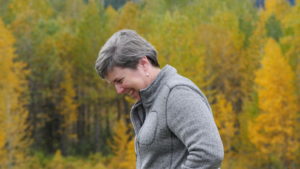Writing for Children and Teens
Writers often return to the tales of their youth in their own stories. Many writers developed their love of reading in a much different time. For some the first literary inspirations came from Anne Shirley, Charlie Bucket, Lucy Pevensie, Harry Potter or some equivalent. By the time storytellers get the opportunity to tell their own tales, however, they’re likely to be adults, and may have forgotten what it means to read as a child does.
Writing for a younger audience
 It may seem like writing for children would be a piece of cake, but there are several unique considerations when you write a young audience. Many of these factors require the writer to determine who exactly their audience is. A few years of age makes a big difference with children. Consider how much a child’s tastes change from the age of 6 to 10 to 14, then think about how much reading changes throughout those same years.
It may seem like writing for children would be a piece of cake, but there are several unique considerations when you write a young audience. Many of these factors require the writer to determine who exactly their audience is. A few years of age makes a big difference with children. Consider how much a child’s tastes change from the age of 6 to 10 to 14, then think about how much reading changes throughout those same years.What’s your score?
Reader comprehension fluctuates greatly in a year or two. How does your writing measure up? Designed by Renaissance Learning, the ATOS formula provides a readability score for any text. A handy tool is the ATOS text analyzer, which will give you an idea of what reading level of your writing.
Generally, children and teens prefer to read about characters who are the same age as they are or are slightly older. It’s a publishing rule of thumb. Does the age of your protagonist match your reading comprehension score? If not, do you need to change the age of your characters or change the complexity of your writing?
Other points to consider when writing for children
- Books for small children will likely be read by an adult. How does your story sound when read aloud?
- How long is your book? The younger the audience, the shorter the book will need to be.
- Make note of what it was you most loved about the books of your childhood. Try to recall this with your childlike mind, without revisiting the work. Once you’ve established what it was that hooked you, go back and reread some of your favorites. What do you notice now that you’re older?
- Keep in mind this quote from E.B. White: “Anyone who writes down to children is simply wasting his time. You have to write up, not down. Children are demanding. They are the most attentive, curious, eager, observant, sensitive, quick, and generally congenial readers on earth. They accept, almost without question, anything you present them with, as long as it is presented honestly, fearlessly, and clearly.”
Local Writers Workshop

Children's book author Jenn Bailey
Children’s book editor and author Jenn Bailey will be joining us for the 6th Annual Local Writers Workshop. She’ll be presenting a special breakout session on writing for children and teens.
The Local Writers Workshop features concise craft and business talks on subjects for writers of all styles and experiences. This year’s event takes place Sat, Aug 17, 9am – 2:30pm. Doors open at 8:30am with an opportunity for writers to connect with fellow writers and grab some refreshments.
In addition to learning about writing for youth, attendees will hear the following presentations:
- Using Twitter to find your agent, editor and writing community - Jenn Bailey
- The Joy of Journaling - Marcia Cebulska, award-winning playwright
- Drawing from personal experience - Bryn Greenwood, bestselling author
- Writing lyric poetry - Tony Silvestri, poet and lyricist
- Small press publishing advice - Jason Ryberg, editor in chief of Spartan Press
- Writing flash fiction - Andy Farkas, sponsored by the Kansas Authors Club
- Keynote presentation by Huascar Medina, Poet Laureate of Kansas
Email writers@tscpl.org for more information about the workshop.
Other resources
For some wonderful resources on writing for children, check out these titles:













